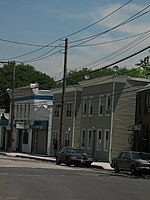Staten Island Academy
Staten Island Academy is a coeducational, college-preparatory day school located on a 14-acre (57,000 m2) campus in Staten Island, New York City, United States. Founded in 1884 by Anton Methfessel, it is the oldest independent school on Staten Island, and is the only independent school (non-public, non-religious) in the borough. It educates students from Pre-Kindergarten through Grade 12. The current enrollment is around 390 students, with a student to teacher ratio of 7:1. Eileen Corigliano is the current head of school. The school is composed of three divisions: Lower School, Pre-K-Gr. 4; Middle School, Gr. 5-8; Upper School, Gr. 9-12. The Head of Lower, Middle and Upper School is Eileen Corigliano. The campus has seven buildings: the Early Childhood Building, the Art Barn, Haugen Hall, Kearns Hall, Crowe Hall, Alumni Hall and the OJ Buck Gymnasium. The school's accreditations include the Middle States Association of Colleges and Schools, and the New York State Association of Independent Schools. It is chartered and registered by the Board of Regents, University of the State of New York.
Excerpt from the Wikipedia article Staten Island Academy (License: CC BY-SA 3.0, Authors).Staten Island Academy
Todt Hill Road, New York Staten Island
Geographical coordinates (GPS) Address Website External links Nearby Places Show on map
Geographical coordinates (GPS)
| Latitude | Longitude |
|---|---|
| N 40.594722222222 ° | E -74.109166666667 ° |
Address
Staten Island Academy
Todt Hill Road 715
10304 New York, Staten Island
New York, United States
Open on Google Maps







